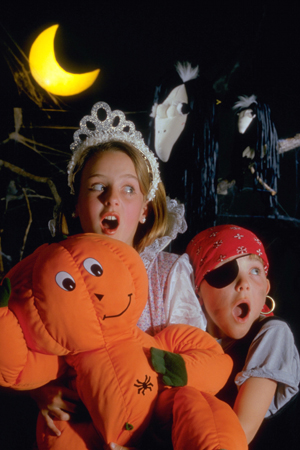
Potentially hazardous costumes or accessories, tainted candy and crossing the street at night are only a few concerns that should be addressed prior to leaving the house.
by Brant Rawls —
Halloween is one of the most exciting holidays for children. However, as the sun goes down and trick-or-treaters start roaming the streets of your neighborhood, consider several things as a parent or guardian. Potentially hazardous costumes or accessories, tainted candy and crossing the street at night without supervision are only a few concerns that should be addressed prior to leaving the house.
Children ages 5 to 14 are four times more likely to be killed while walking on Halloween evening, compared to other evenings of the year. Falling is the leading cause of injury among children on Halloween. This is a fun time for children, but it also is an important time to be extra vigilant for possible safety hazards.
Beverly Losman, with Children’s Healthcare of Atlanta and Safe Kids of Georgia, offers these tips to parents who want to make this a safe Halloween:
Avoid costumes with excessive flowing fabric, such as capes or sleeves. Loose clothing can easily brush up against a jack-o-lantern or other open flames, causing a costume to catch on fire.
Make sure a costume fits properly. Oversized costumes and footwear, such as clown or adult shoes, can cause your child to trip and fall; you may find that your little one comes home with more scrapes and bruises than candy. Avoid hats that will slide over his eyes.
Accessorize with flexible props, such as rubber swords or knives. Inflexible props can cause serious injury in the event of a fall.
Apply face paint or cosmetics directly to the face, and make sure it is nontoxic and hypoallergenic. A loose-fitting mask can obstruct a child’s vision. If a mask is worn, be certain it fits securely. Cut the eyeholes large enough for full vision.
If possible, choose a brightly colored costume that drivers can easily spot. If not, decorate the costume with reflective tape and stickers.
Always supervise children under the age of 13. Older children should trick-or-treat in a group, and a curfew should be established. Attach the name, address and phone number (including area code) of children under age 13 to their clothes, in the event they get separated from adults. Have each child carry a cell phone or loose change in case he or she gets lost and needs to call home.
Children should only go to well-lit houses and remain on the porch within street view.
Teach your child to cross the street only at crosswalks or intersections. Make sure he understands never to cross between parked cars and to always look both ways before crossing. Remind him to stay on the sidewalk, if possible, and to walk, not run, facing traffic and to avoid using shortcuts across backyards or alleys. Use flashlights when trick-or-treating in the dark.
Remind your child not to eat any treats before you have a chance to examine them thoroughly for holes and punctures. Throw away all treats that are homemade or unwrapped. To help prevent your children from munching, give them a snack or light meal before they go trick-or-treating.
Parents of food-allergic children must read every candy label to avoid a potentially life-threatening situation.
Incorporating these easy tips into your trick-or-treating routine will not only ensure safety and security, but they will also make for a more relaxed and fun evening for everyone.
Brant Rawls is with Children’s Healthcare of Atlanta, one of the largest clinical care providers for children in the United States. brant.rawls@choa.org or www.choa.org.
Reprinted from AzNetNews, Volume 29, Number 5, Oct/Nov 2010.





February 25, 2012
Children and Teens, Holidays